- Home
- Stephen Baxter
Space m-2 Page 9
Space m-2 Read online
Page 9
“And, as far as we can tell from the Bruno data,” Sally said, “that Gaijin flower-ship was pretty much a RAIR design: exotic-looking, but nothing we can’t comprehend. Bruno actually passed through what seemed to be a stream of exhaust, before it ceased to broadcast.” A nice euphemism, thought Maura, for was trapped and dismantled. “The exhaust was typical of products of a straightforward deuterium-helium-3 fusion reaction, of the type we’ve been able to achieve on Earth for some decades.”
Sally hesitated. She was a small woman, neat, earnest, troubled. “There are puzzles here. We can think of a dozen ways the Gaijin design could be improved — nothing that’s in our engineering grasp right now, but certainly nothing that’s beyond our physics. For instance the deuterium-helium fusion reaction is about as low-energy and clunky as you can get. There are much more productive alternatives, like reactions involving boron or lithium. I think I always imagined that when ET finally showed up, she would have technology beyond our wildest dreams — beyond our imagining. Well, the flower-ships are pretty, but they aren’t the way we’d choose to travel to the stars—”
“Especially not in this region,” Nemoto said evenly.
“What do you mean?” Maura said.
Nemoto smiled thinly, the bones of her face showing through papery skin. “Now that we are, like it or not, part of an interstellar community, it pays to understand the geography of our new terrain. The interstellar medium, the gases that would power a ramjet, is not uniform. The Sun happens not to be in a very, umm, cloudy corner of the Orion Spiral Arm. We are moving, in fact, through what is called the ICM — the intercloud medium. Not a good resource for a ramjet. But of course the flower-ships are not interstellar craft.” She eyed Maura. “You seem surprised. Isn’t that obvious? These ships, with their small fraction of light speed, would take many decades even to reach Alpha Centauri.”
“But time dilation — clocks slowing down as you speed up—” Maura said.
Nemoto shook her head. “Ten percent of lightspeed is much too slow for such effects to become significant. The flower-ships are interplanetary cruisers, designed for travel at speeds well below that of light, within the relatively dense medium close to a star. The Gaijin are interplanetary voyagers; only accidentally did they become interstellar pioneers.”
“Then,” Maura asked reasonably, “how did they get here?”
Nemoto smiled. “The same way Malenfant has departed the system.”
“Just tell me.”
“Teleportation.”
Maura had brought Sally Brind here because she’d grown frustrated, even worried, by the passage of a full year since Malenfant’s disappearance: a year in which nothing had happened.
Nothing obvious had changed about the Gaijin’s behavior. The whole thing had long vanished from the mental maps of most of the public and commentators, who had dismissed Malenfant’s remarkable jaunt as just another odd subplot in a slow, rather dull saga that already spanned decades. The philosophers continued to debate and agonize over the meaning of the reality of the Gaijin for human existence. The military were, as always, war-gaming their way through various lurid scenarios, mostly involving the Gaijin invasion of Earth and the Moon, huge armed flower-ships hurling lumps of asteroid rock at the helpless worlds.
Meanwhile, the various governments and other responsible authorities were consumed by indecision.
Truthfully, the facts were still too sparse, questions still proliferating faster than answers were being obtained, mankind’s image of these alien intruders still informed more by old fictional images than any hard science. The picture was not converging, Maura realized with dismay, and history was drifting away from meaningful engagement with the Gaijin.
Which was why she had set up this meeting. Nemoto had, after all, been the first to detect the Gaijin. She had quickly understood the implications of her discovery, and she had immediately selected the one person, Reid Malenfant, who had, in retrospect, been best placed to help articulate her discovery to the world, and even to do something about it.
If anybody could help Maura think through the jungle of possibilities of the future, it was surely Nemoto.
But still — teleportation?
Maura closed her eyes. So I have to imagine these Gaijine-mailing themselves from star to star. She suppressed a foolish laugh.
Nemoto continued to tinker with her apparatus, her plants.
“Let’s be clear,” Sally Brind said slowly. “You think the hoop Malenfant found was some kind of teleportation node. Then why not locate this… gateway… in the asteroid belt? Why place it all the way out on the rim of the system, with all the trouble and effort that causes?”
Nemoto kept her counsel, letting the younger woman think it through.
Sally snapped her fingers. “But if you teleport from another star you must basically fire a stream of complex information by conventional signal channels — that is, light or radio waves — at the star system, the target. And the place to pick that up with greatest fidelity is the star’s solar focus, where the signal gain is in the hundreds of millions… But Malenfant can’t have known this. He can’t have deduced the mechanism of teleportation.”
“But his intuition is strong,” Nemoto said, smiling. “He recognized a gateway, and he stepped through it. Contact had been his purpose, after all.”
“I thought,” Maura said doggedly, “teleportation was impossible. Because you’d need to map the position and velocity of every particle making up the artifact you want to transmit. And that violates the uncertainty principle, the notion that, because of quantum fuzziness, it was impossible to map precisely the position and momentum of a particle. And if you couldn’t make such a map, how could you encode, transmit, and reconstruct such a complex object as a human being?”
“If you did it so crudely as that, yes,” Nemoto said. “In a quantum universe, no such classical process could possibly work. Even in principle we know only one way to do this, to teleport. An unknown quantum state can be disassembled into, then later reconstructed from, purely classical information and purely nonclassical correlations…”
“Nemoto, please,” Maura said tightly.
“This is a teleport machine,” Nemoto said, waving her hand at her strung-out junk. “Sadly I can only teleport one photon, one grain of light, at a time. For the moment.”
“Sally, do you understand any of this?”
“I think so,” Sally said. “Look, quantum mechanics allows for the long-range correlation of particles. Once two objects have been in contact, they’re never truly separated. There is a kind of spooky entanglement, called EPR correlation.”
“EPR?”
“For Einstein-Podolsky-Rosen, the physicists who came up with the notion.”
“I do not transport the photon,” Nemoto said. “I transmit a description of the photon. The quantum description.” She tapped two boxes. “Transmitter and receiver. These contain a store of EPR-correlated states — that is, they were once in contact, and so are forever entangled, as Sally puts it.
“I allow my photon to, umm, interact with ancillary particles in the receiver. The photon is absorbed, its description destroyed. But the information I extract about the interaction can then be transmitted over to the receiver. There I can use the other half of my entangled pair to reconstruct the original quantum state.”
“The receiver has to be entangled with the transmitter,” Sally said, still figuring it out. “What the builders must have done is send over the receiver gate — the hoop Malenfant found — by some conventional means, a slower-than-light craft like a flower-ship. The gate is EPR-correlated with another object back home, a transmitter. The transmitter makes a joint measurement on itself and the unknown quantum system of the object to be teleported. The transmitter then sends the receiver gate the classical result of the measurement. Knowing this, the receiver can convert the state of its EPR twin into an exact replica of the unknown quantum state at the transmitter…”
“So now yo
u have two photons,” Maura said slowly to Nemoto. “The original and the version you’ve reconstructed.”
“No,” Nemoto said, with strained patience. “I explained this. The original photon is destroyed when it yields up its information.”
“Maura,” Sally said, “quantum information isn’t like classical information, the stuff you’re used to. Quantum information can be transformed, but not duplicated.” She studied Maura, seeking understanding. “But, even if we’re right about the principle here, there is a lot here that is far beyond us. Think about it. Nemoto can teleport a single photon; the Gaijin gateway can teleport something with the mass of a human being. Malenfant’s body contained—”
“Some ten to power twenty-eight atoms,” Nemoto said. “That is ten billion billion billion. And therefore it must take the same number of kilobytes, to a similar order of magnitude, to store the data. If not more.”
“Yes,” Sally said. “By comparison, Maura, all the books ever written probably amount to a mere thousand billion kilobytes. The data compression involved must be spectacular. If we could get hold of that technology alone, our computing and telecoms industries would be transformed.”
“And there is more,” Nemoto said. “Malenfant’s body was effectively destroyed. That would require the extraction and storage of an energy equivalent of some one thousand megaton bombs…”
His body was destroyed. Nemoto said it so casually.
“So,” Sally said slowly, “the signal that encodes Malenfantis currently being transmitted between a transmitter-receiver link—”
“Or links,” Nemoto said.
“Links?”
“Do you imagine that such a technology would be limited to a single route?”
Sally frowned. “You’re talking about a whole network of gateways.”
“Perhaps placed in the gravitational foci of every star system. Yes.”
And now, all at once, Maura saw it: a teleport network spanning the huge gaps between the stars, grand data highways along which one could travel — and without being aware even of the passing of time. “My God,” she murmured. “The roads of empire.”
“And so,” Sally said, working her way through Nemoto’s thinking, “the Gaijin built the gateways. Right?”
“Oh, no,” Nemoto said gently. “The Gaijin are much too… primitive. They were limited to their system, as we are to ours. In their crude ram-jet flower-ships, exploring the rim of the system, they stumbled on a gateway — or perhaps they were guided to look there by others, as we have been by the Gaijin in turn.”
“If not the Gaijin, then who?” Maura asked.
“For now, that is unknowable.” Nemoto gazed at her clumsy apparatus, as if studying the possibilities it implied.
Sally Brind got to her feet and moved slowly around the cramped apartment, drifting dreamily in the low lunar gravity. “It takes years for a signal, even a teleport signal, to travel between the stars. This must mean that nobody out there has developed faster-than-light technology. No warp drives, no wormholes. Kind of low tech, don’t you think?”
“In such a galaxy, processes — cultural contacts, conflicts — will take decades, at least, to unfold,” Nemoto said. “If Malenfant is heading to a star, it will take years for his signal to get there, more years before we could ever know what became of him.”
“And so,” Maura said dryly, “what must we do in the meantime?”
Nemoto smiled, her cheekbones sharp. “Why, nothing. Only wait. And try not to die.”
In the silent years that followed, Maura Della often thought of Malenfant.
Where was Malenfant?
Even if Nemoto was right, with his body destroyed — as the detailed information about the contents and processes of his body and brain shot toward the stars — where was his soul? Didit ride the putative Gaijin laser beam with him? Was it already dispersed?
And would the thing that would be reconstructed from that signal actually be Malenfant, or just some subtle copy?
Still, in all this obscure physics there was a distinct human triumph. Malenfant had found this mysterious gateway. And passed through. She remembered the resentment she had felt while watching the Gaijin’s calm appropriation of Solar System resources in the asteroid belt, their easy taking of the Bruno. Now Malenfant had fired himself back through the transport system the Gaijin themselves had used, back to the nest of the Gaijin, and Maura felt a stab of savage satisfaction.
Hey, Gaijin. You have mail…
But these issues weren’t for Maura.
She had done her best to use Nemoto’s insights and other inputs to rouse minds, to shape policy. But the time had come for her to retire, to drive out of the Beltway at last. She went home, to a small town called Blue Lake, in northern Iowa, her old state, the heart of the Midwest.
Her influence was ended. Too damn old.
I don’t have decades left; I don’t have the strength to stay alive, waiting, like Nemoto, while the universe ponderously unfolds; for me, the story ends here. You’ll just have to get along by yourself, Malenfant.
Godspeed, Godspeed.
Chapter 7
Reception
The blue light faded.
He realized he’d been holding his breath. He let it out, gasping; his chest ached. He was grasping the MMU hand controllers compulsively. He flexed his hands; the gloves were stiff.
The blue artifact was all around him, inert once more. He couldn’t see any difference; the Sun’s light glimmered from its polished surface, casting double shadows—
Double?
He looked up, to the Sun, and flipped up his gold visor.
The Sun seemed a little brighter, a strong yellow-white. And it was a double pinprick now, two jewels on a setting of velvet. The light was actually so bright it hurt his eyes, and when he looked away there were tiny double spots on his retina, bright yellow against red mist.
It wasn’t the Sun, of course. It was a binary star system. There was a misty lens-shaped disc around the twin stars: a cloud of planetary material, asteroids, comets — a complex inner system, illuminated by double starlight. Even from here, just from that smudge of diffuse light, he could see this was a busy, crowded place.
He worked his controller and swiveled. Beyond the gate, the Perry was gone.
No. Not gone. Just parked a few light-years away, is all.
He had no idea how the artifact had worked its simple miracle. Nor, frankly, did he care. It was a gateway — and it had worked, and had taken him to the stars.
Yes, but where the hell, Malenfant?
He looked around the sky. The stars were a rich carpet, overwhelming the familiar constellations.
After some searching he found Orion’s belt, and the rest of that great constellation. The hunter looked unchanged, as far as he could see. Orion’s stars were scattered through a volume of space a thousand light years deep, and the nearest of them — Betelgeuse, or maybe Bellatrix, he couldn’t recall — was no closer than five hundred light-years from the Sun.
That told him something. If you moved across interstellar distances your viewpoint would shift so much that the constellation patterns would distort, the lamps scattered through the sky swimming past each other like the lights of an approaching harbor. He couldn’t have come far, then — not on the scale of the distances to Orion’s giant Suns. A handful of light years, no more.
And, given that, he knew where he was. There was only one system like this — two Sol-like stars, bound close together — in the Sun’s immediate neighborhood. This was indeed Alpha Centauri, no more remote from Sol than a mere four light-years plus change. Just as he had expected.
Alpha Centauri: the dream of centuries, the first port of call beyond Pluto’s realm — a name that had resonated through a hundred starship studies, a thousand dreams. And here he was, by God. He felt his mouth stretch wide in a grin of triumph.
He blipped his thrusters and swiveled, searching the sky until he found another constellation: a neat, unmistaka
ble W shape picked out by five bright stars. It was Cassiopeia, familiar from his boyhood astronomy jags. But now there was an extra star to the left of the pattern, turning the constellation into a crude zigzag. He knew what that new star must be, too.
Suspended in immensity, here at the rim of the Alpha Centauri system, Malenfant raised his visor and looked back at the Sun.
The Sun is a star — just a star. Giordano Bruno was right after all, he thought.
But if it took light four years to get here, it had surely taken him at least as long, however the portal worked. Suddenly I am four years into the future. And, even if I was to step home now — assuming that was possible — it would be another four years before I could feel the heat of the Sun again.
How strange, he thought, and he felt subtly cold.
Movement, just ahead of him. He rotated again.
It was a spider robot like the one he had seen on the other side of the portal. There was a puff of what looked like reaction-control engines, little sprays of crystals that glittered in the remote double light. Crude technology, he thought, making assessments automatically. It was heading toward the gate, its limbs writhing stiffly.
It seemed to spot him.
It stopped dead, in another flurry of crystals, a good distance away, perhaps a kilometer. But distances in space were notoriously hard to estimate, and he had no true idea of the robot’s size.
Those articulated limbs were still writhing. Its form was complex, shifting — obviously functional, adaptable to a range of tasks in zero gravity. But overall he saw that the limbs picked out something like a W shape, like the Cassiopeia constellation, centered on a dodecahedral core. He had no idea what it was doing. Perhaps it was studying him. He could barely see it, actually; the device was just an outline in Alpha Centauri light.

 The Martian in the Wood
The Martian in the Wood THE H-BOMB GIRL
THE H-BOMB GIRL World Engine
World Engine Titan n-2
Titan n-2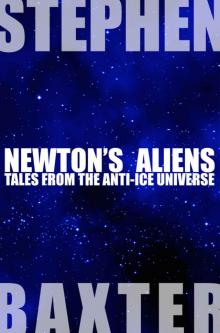 Newton's Aliens: Tales From the Anti-Ice Universe
Newton's Aliens: Tales From the Anti-Ice Universe Exultant
Exultant Manifold: Origin
Manifold: Origin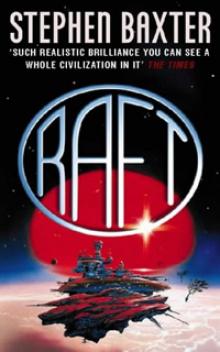 Raft xs-1
Raft xs-1 Bronze Summer n-2
Bronze Summer n-2 Transcendent
Transcendent Stone Spring
Stone Spring Coalescent
Coalescent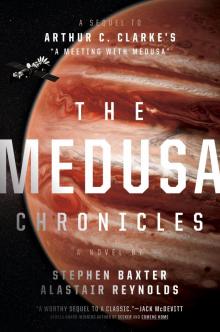 The Medusa Chronicles
The Medusa Chronicles Origin m-3
Origin m-3 Silverhair tm-1
Silverhair tm-1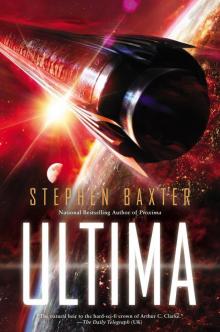 Ultima
Ultima Voyage n-1
Voyage n-1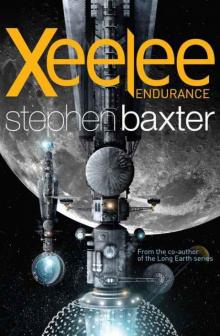 Xeelee: Endurance
Xeelee: Endurance Space m-2
Space m-2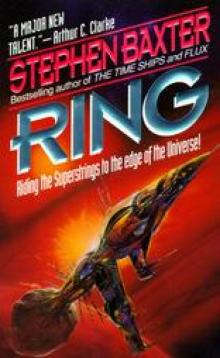 Ring xs-4
Ring xs-4 Raft
Raft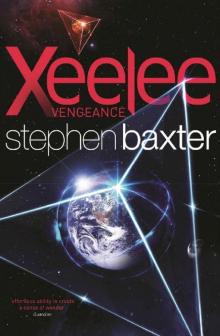 Xeelee: Vengeance
Xeelee: Vengeance Iron Winter n-3
Iron Winter n-3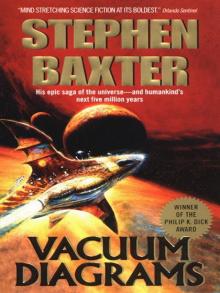 Vacuum Diagrams
Vacuum Diagrams Longtusk tm-2
Longtusk tm-2 Proxima
Proxima Evolution
Evolution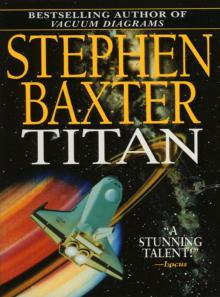 Titan
Titan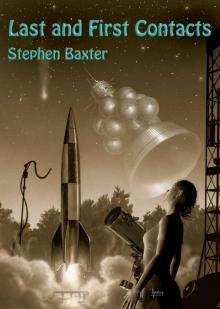 Last and First Contacts (Imaginings)
Last and First Contacts (Imaginings) Emperor
Emperor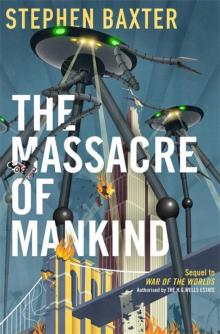 The Massacre of Mankind
The Massacre of Mankind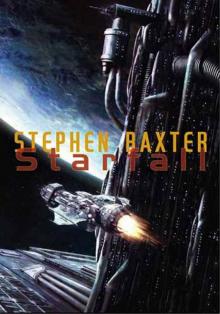 Starfall
Starfall Doctor Who - The Wheel of Ice
Doctor Who - The Wheel of Ice Longtusk
Longtusk Silverhair
Silverhair Conqueror tt-2
Conqueror tt-2 Flood
Flood Flood f-1
Flood f-1 Emperor tt-1
Emperor tt-1 Moonseed
Moonseed Conqueror
Conqueror Timelike Infinity xs-2
Timelike Infinity xs-2 The Ghost Pit
The Ghost Pit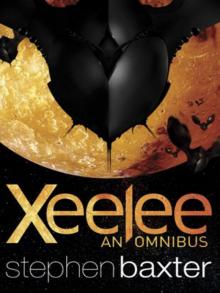 Xeelee: An Omnibus: Raft, Timelike Infinity, Flux, Ring
Xeelee: An Omnibus: Raft, Timelike Infinity, Flux, Ring Weaver tt-4
Weaver tt-4 Landfall: Tales From the Flood/Ark Universe
Landfall: Tales From the Flood/Ark Universe Ark
Ark Emperor: Time’s Tapestry Book One
Emperor: Time’s Tapestry Book One Space
Space Icebones
Icebones Manifold: Space
Manifold: Space Navigator
Navigator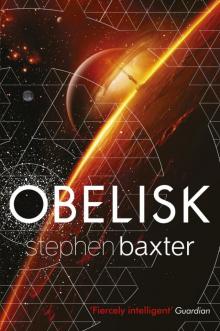 Obelisk
Obelisk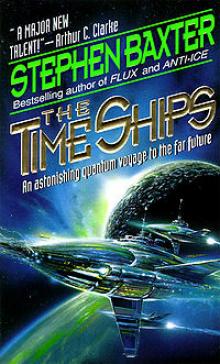 The Time Ships
The Time Ships Bronze Summer
Bronze Summer Resplendent
Resplendent Moonseed n-3
Moonseed n-3 Flux xs-3
Flux xs-3 Transcendent dc-3
Transcendent dc-3 Icebones tm-3
Icebones tm-3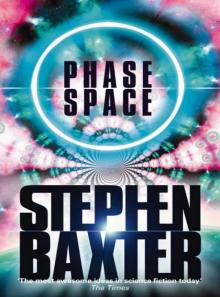 Phase Space
Phase Space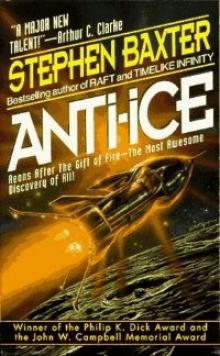 Anti-Ice
Anti-Ice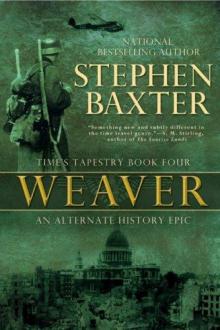 Weaver
Weaver Voyage
Voyage Time m-1
Time m-1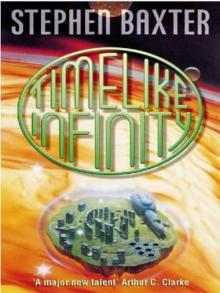 Timelike Infinity
Timelike Infinity Exultant dc-2
Exultant dc-2 Coalescent dc-1
Coalescent dc-1 Navigator tt-3
Navigator tt-3